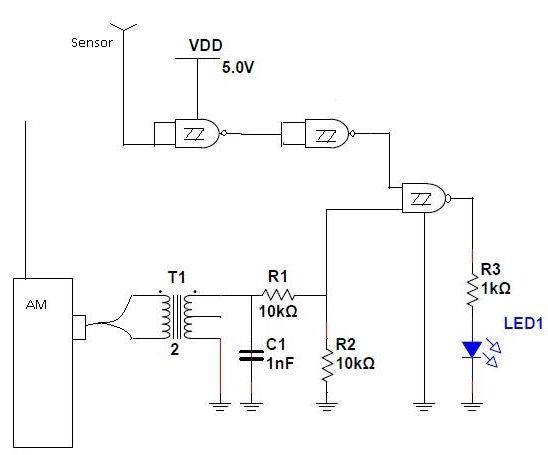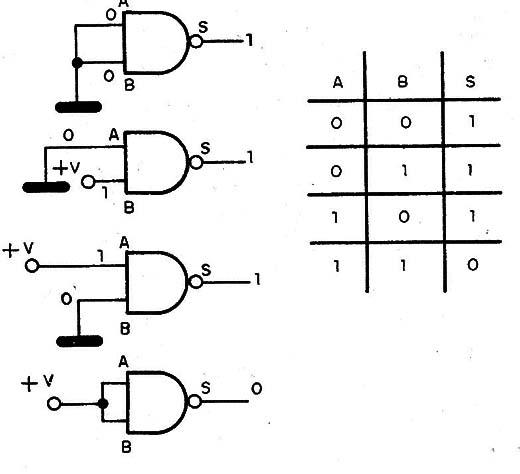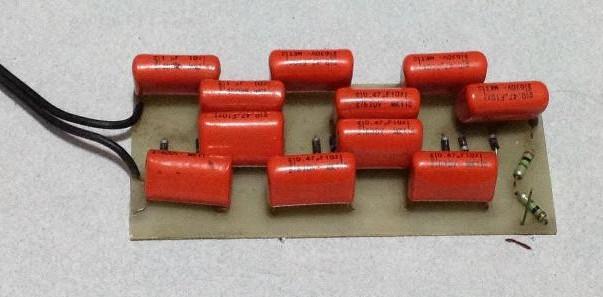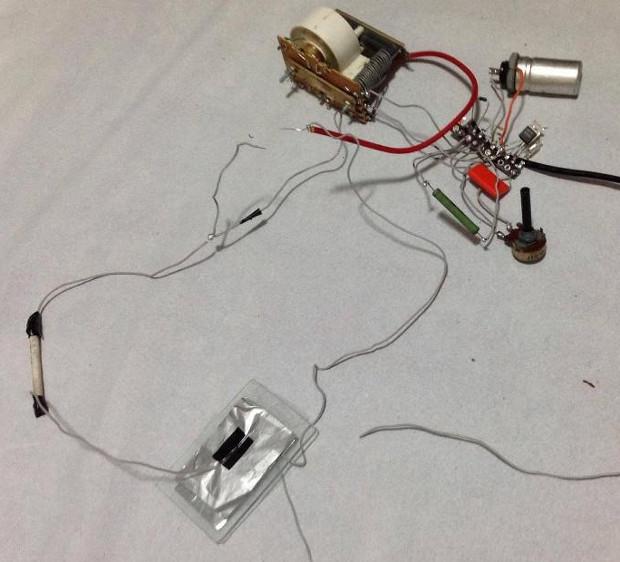The ground electrical charges are subject to the effects of surface curvature and charge density. As a sharp point/object will accumulate more charge in that point, the electrical field will be stronger on that spot. Therefore, electrical charges will accumulate on a sharp object standing on the ground below a charged cloud, which justifies lightnings striking lightning rods, utility poles, and, sometimes, people.
Elton Shinji Okuma Hayachiguti, Leonardo Araujo Lion, Newton de Carvalho Braga (Advisor) - Colégio Mater Amabilis, Guarulhos, SP
According to the National Institute of Space Research (INPE), around one in every 50 fatalities caused by lightning happens in Brazil. Annually, more than 50 million lightnings are registered in Brazil, and, from 2000 to 2014, 1790 fatal accidents happened. These tragedies happened in places such as beaches, farms, football fields and even inside houses. Although INPE has a large scale online lightning detector, the public isn’t aware of its existence and reasonable meteorology knowledge and internet connection are necessary to use it.
Therefore, a more accessible and cheaper lightning detection principle was brought up. This article describes the developed system’s operation and analyses the variables that affected detection sensibility, as well as discusses future research possibilities to enhance the detector to enable secure use in an open field.
OBJECTIVES
As shown, Brazil is one of the countries with most lightning strikes, which causes many fatal accidents. This condition prompted the development of a new way to detect lightnings.
Average electrical fields created by charged clouds are measured at around 10kV/m, and to detect such intense field, an electroscope could be used. Besides, an electrical discharge is also known to produce electromagnetic waves that range between 2kHz and 450kHz, which fall in the interval of long waves and medium waves. These waves can be easily noticed by the use of an AM Radio during a thunderstorm, as the wave will be detected and a sudden high-frequency sound will be heard from the radio during transmission. The effect is even clearer if the AM radio is not tuned to any radio station, as the high-frequency sound will be sharper, without being interrupted by voice or music playing.
From these pieces of information, a two-module lightning detector was drafted. The two modules would be an electroscope and a medium-long wave detector (AM radio). If the combination of signals from both modules were positive for a lightning risk, a signal could be emitted for people in the area to evacuate and search for shelter.
For the combination of each modules’ signals, an integrated circuit was used, the CMOS 4093. This IC works with NAND logic gates, which enabled data interpretation to result in the final signal of whether there was risk of lightnings or not.
EQUIPMENT AND METHODOLOGY
For building the detector, the following components were used:
Portable AM Radio;
CMOS 493 Chip;
Transformer;
1 nF Capacitor ;
10 kΩ and 1 kΩ Resistors ;
Earbud cables;
550 point protoboard;
6V Power supply;
Cables;
LED;
Antenna;
All the components were assembled on the protoboard. The transformer was used to amplify the electrical pulse created by the detection of medium waves by the AM Radio.

The radio uses one of the CMOS 4093’s logical gates. The electroscope is comprised of one gate functioning as an electric potential difference detector, and another one functioning as an inverter, before being combined with the AM Radio. This is possible because the CMOS 4093 acts according to the following truth table:

Each signal “1” indicates a positive signal from a pin, and each signal “0” indicates a negative signal. Analyzing all the possible arrangements, it is clear that the only way to receive a resulting negative signal is to have to positive signals from each pin. Therefore, the circuit’s LED would only go off when both electroscope and radio signals were positive, indicating the only situation of effective lightning detection.
Due to time constraint and dependence on climate conditions, a simulation device was used, enabling the production of both electromagnetic waves from an electrical discharge and a strong enough electric field for the electroscope to work.
The first devices used were an ionizer and a very high voltage source. They are displayed in the following pictures:


The usage of both devices presented adequate simulation of a thunderstorm. There was no risk for the devices’ operators, as the voltage source used a flyback that isolated anyone from the electrical grid, as well as a SCR transistor to limit current. Therefore, any shock would be harmless, although painful.
Subsequently, an aluminum foil capacitor was installed along with the High Voltage source, so that there would be no need for an ionizer. A wire connected to this capacitor would create an electrical field similar to the ionizer’s. Thus, the High Voltage source with capacitor was the main simulation device.
For laboratory tests, the circuit’s overall functionality was checked and an analysis of sensibility - as the function of the antenna length - was tested. Each individual module in the detector (AM Radio and electroscope) was also tested.
Besides laboratory testing, some tests were made during real thunderstorms, which allowed new analysis to be made about the project. Other ways to improve overall performance were also conceived, in order to allow the detector to be used in an open field.
RESULTS AND ANALYSIS
Laboratory tests indicated that the proposed system works effectively. Verification of functionality of each module was also positive, as the radio emitted the necessary cracking sound and the electroscope indicated the presence of an electrical field from both High Voltage source with capacitor and ionizer. Maximum detection range depending on antenna length was also tested and results are displayed on the following graph:

Varying antenna length showed that the antenna sensibility is an extremely relevant factor and plays a decisive role on the prototype’s detection. This spurred new ideas regarding future changes to enable open field use of the detector.
The detection was verified as the LED momentarily turned off when an electrical discharge happened in the presence of an electrical field. This indicates that a positive pulse from the AM Radio and a positive electrical field detection pulse united on a logical gate and resulted in the negative signal that turned the LED off.
To perform tests during thunderstorms, the detector was put in a table, away from the outdoor environment, with a view avoid any damage, specially caused by electrical discharges or water.
Tests were generally positive, although reservations can be made regarding thunderstorm tests. All laboratory tests were satisfying and repeatability was confirmed for experimentation with the prototype and the simulators mentioned.
During real storms, lightning detection occurred in two cases, but in every other thunderstorm tested there was no variation in the LED (even though lightning were striking). The cause was probably the antenna’s sensibility, which hindered electrical field detection. For use in open field, the following considerations were made: usage of a more sensitive antenna (graph 1 shows that an increase in sensibility causes an increase in detection range - the fit line was used to show this behavior); usage of a long wave detector, as it would be detected not as a cracking sound as in medium waves, but as a high pitch sound with greater duration, resulting in a continuous impulse detected.
CONCLUSIONS
From the many experiments conducted, it can be concluded that the detection system and principle proposed are innovative and can properly execute the function of detecting lightnings. However, a few changes are still necessary before the detector can be used in open field. These changes would prompt the usage of a long wave detector instead of a medium wave detector, as long waves are more noticeable. Installing a more sensitive antenna would also play an important role, as the electric field would be detected more precisely and easily. Finally, after installation with necessary adaptations, an electrically isolated cover for the detector would be necessary, so as to avoid any damage.
Although the project is not a finalized product yet, the detection system and functioning principle proposed can adequately fulfill its duty of detecting electrical discharges. Moreover, a lot of new opportunities regarding research and development of lightning detectors were born, focusing on the avoidance of accidents.
BIBLIOGRAPHIC REFERENCES
BRAGA, Newton. “Detecção de Descargas Atmosféricas(ART 716)”. Can be accessed in: http://newtoncbraga.com.br/index.php/eletronica/57-artigos-e-projetos/5588-art716. Accessed on: 28/07/2016.
Can be accessed in: http://ultimosegundo.ig.com.br/brasil/2014-12-30/1672-pessoas-morreram-no-pais-atingidas-por-raios-entre-2000-e-2013.html. Accessed on: 18/07/2016.
Braga, Newton. “Efeito das pontas”. Can be accessed in: http://www.newtoncbraga.com.br/index.php/almanaque/1071-alm184.html. Accessed on 20/08/2016.
Braga, Newton. “Fonte de Muita Alta Tensão (ART 1418)”. Can be accessed in: http://www.newtoncbraga.com.br/index.php/eletronica/57-artigos-e-projetos/12605-fonte-de-muita-alta-tensao-art1418. Accessed on 17/08/2016.
Braga, Newton. “Ionizador Negativo (MA078)”. Can be accessed in: http://www.newtoncbraga.com.br/index.php/meio-ambiente-e-saude/11407-ionizador-negativo-ma078. Accessed on 17/08/2016.
Braga, Newton. “Conheça o 4093 (ART 1606)”. Can be accessed in: http://www.newtoncbraga.com.br/index.php/eletronica/52-artigos-diversos/9017-conheca-o-4093-art1606. Accessed on 04/08/2016
BRASIL, Agência. “1.672 pessoas morreram no Brasil atingidas por raios entre 2000 e 2013”. 2014. Pode ser INPE,Instituto Nacional de Pesquisas Espaciais. “Você sabia?”. Can be accessed in: http://www.inpe.br/webelat/homepage/menu/el.atm/perguntas.e.respostas.php. Accessed on: 07/08/2016.
FERRARO,Nicolau Gilberto et al. “Fundamentos da Física”,10.ed.São Paulo. Editora Moderna. 2009. Página 96
MERCERET, Francis. “On the Magnitude of the Electric Field near Thunderstorm-Associated Clouds”. 2007. Can be accessed in: http://science.ksc.nasa.gov/amu/journals/jamc-2008.pdf. Accessed on: 20/07/2016.
Staszewski, ?ukasz “Lightning Phenomenon – Introduction and Basic Information to Understand the Power of Nature”. Can be accessed in: http://eeeic.eu/proc/papers/52.pdf. Accessed on: 20/08/2016.




